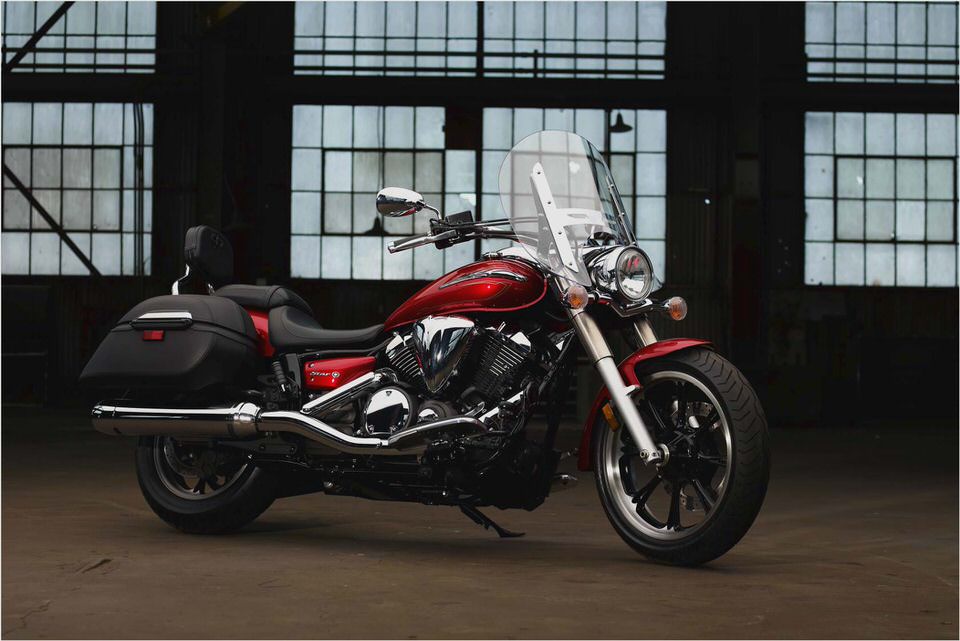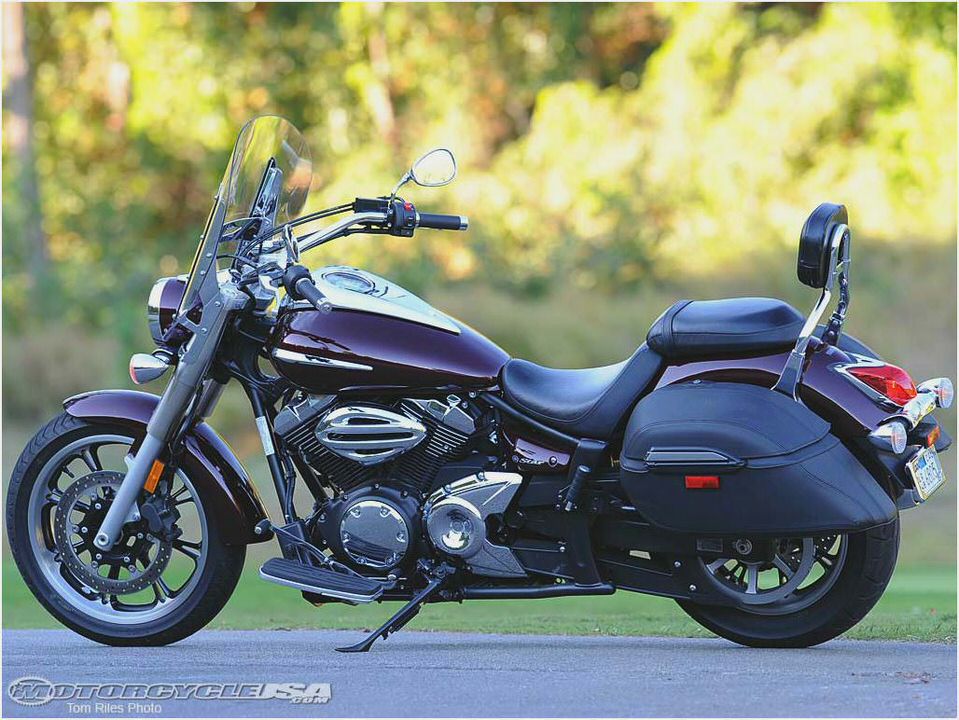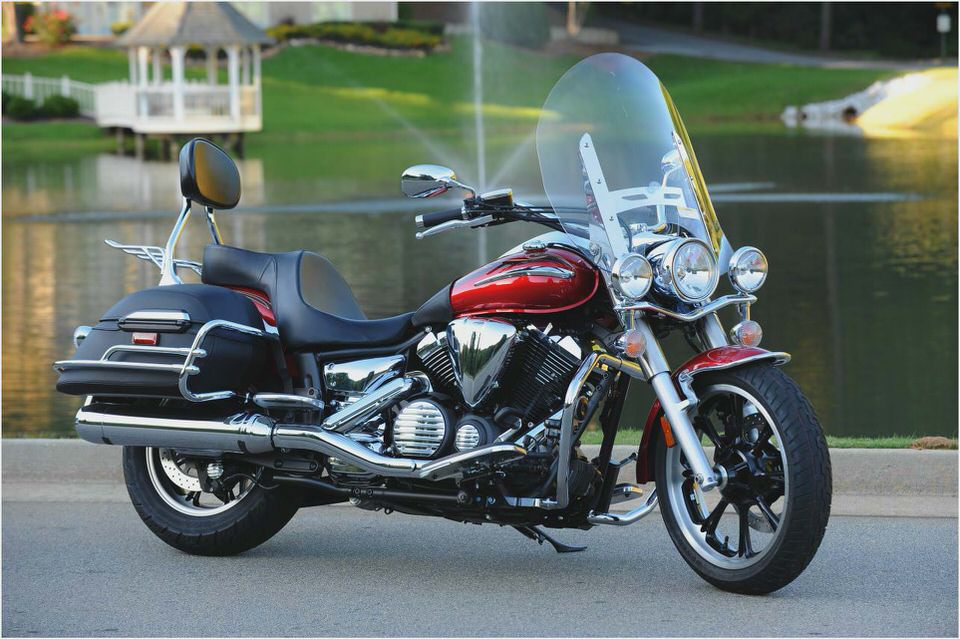
2009 Yamaha V-Star 950 Test Drive: V-Twin Bike is a Fun Middleweight Cruiser
October 1, 2009 12:00 AM
Clayton, Ga. Yamaha’s Star Motorcycles division made headlines this year when it took the wraps off the nearly 200-hp 2009 V-Max. but the $18,000 pavement scorcher isn’t exactly the best choice for sensible commuters or even most weekend warriors. It’s just a bit too radical.
In contrast to the mad Max, Star’s new V-Star 950 and V-Star 950 Tourer combine a 942 cc V-twin engine with a low seat height and manageable curb weightmaking it a solid bike for intermediate riders or those wanting to downsize from heavyweight cruisers. Best of all, the V-Star 950 starts at $7890 and delivers an estimated 47 mpgso this is one bike that could qualify as a great daily commuter. Basem Wasef
The Specs
The V-Star 950 comes in two configurations: the standard ($7890 in black, $8090 in blue or red), and the Tourer ($8990 in black or black cherry, and $9090 for silver.) The Tourer adds a windscreen, passenger backrest and saddlebags with 11 gal of storage capacity. The $1000 premium for the Tourer package is considerably less than the individual costs of the accessories.
The V-Star 950’s elongated proportions are held together with a new double-cradle frame. The 950’s seat height is only 26.6 in.so it will accommodate even the most vertically challenged riders. A 942 cc, air-cooled, 60-degree V-twin is rigid-mounted to the frame.
The fuel-injected engine features ceramic composite plated cylinders and forged aluminum pistons, with exhaust routed through two-into-one pipes. The twin produces 58 lb-ft of torque at 3500 rpm, but you’ll have to guess engine speed since there’s no tachometer.
A five-speed transmission with straight-cut gears transfers power to the rear wheel, and because Yamaha’s market research revealed that cruiser riders don’t dig shaft drive (which is found in the smaller V-Star 650), the V-Star 950’s 16-in. rear wheel is driven by a belt drive. We like that.
Up front, a 41 mm KYB fork offers 5.3 in. of travel, and a link-type rear suspension has 4.3 in. of movement with nine-way preload adjustability using a small tool stored underneath the seat. Stopping power comes from a 320 mm single-disc two-piston setup at the head, and a 298 mm single-disc one-piston arrangement out back. Key to any bike’s maneuverability is its curb weight, and the V-Star 950 tips the scales at a reasonable 613 pounds for the standard bike and 657 pounds for the Tourer.
The Ride
We covered 120 miles of winding mountain roads on both versions of the V-Star 950, and came away impressed with this cruiser’s ability to handle twisty pavementpavement that was seemingly made for sportbikes. Straddle the V-Star 950, and the first thing you’ll notice is the low seat height that puts the rider in the bike, not on the bike, a seating position that’s good for shorter riders. The seat’s low position and narrow taper at the front of the saddle makes it easy to reach for the ground.
On the other hand, the seat’s low position results in a steeply angled rear portion of the saddle, which can create a pressure point on long rides. We got a bit of saddle soreness after about 80 miles on the road. Incidentally, it seems that taller riders we talked to complained more about the seat than the shorter ones.

The riding position is relaxed, with legs stretched slightly forward and outwards, due to the air box on the right and an engine cover on the left. Swept-back handlebars allow an easy reach for the grips, and foot controls are where you’d expect them (though it takes a bit of attention to place your left boot between the heel and toe shifter points.) Clutch effort is very light, another plus for newer riders, and the handlebars turn with ease.
The 942 cc twin produces a deep, rumbling pulse thanks to a dual-expansion chamber muffler, and thrust is strong enough to satisfy most fast-paced cruisers. The engine runs surprisingly smoothly considering it’s rigid-mounted and lacks counterbalancers. Though some vibrations seep into the floorboards, seat and handlebars at higher rpm, the engine is mellow where most riders will spend the majority of their timein the low-to-medium rev range.
The V-Star 950’s low center of gravity helped it negotiate the serpentine roads of the north Georgia hill country, though scraping was inevitable during more extreme lean angles. We noticed that some riders tended to bottom out more than others. Adjusting rear preload levels might help reduce the amount of contact made with the road.
But if that doesn’t solve the problem, at least it’s the inexpensive, easily replaceable feelers that take the abuse, rather than the entire floorboard assembly.
The Tourer’s ergonomics and windscreen do a descent job of muffling the traditional wind buffet. But we found the stock screen a bit too short for higher speeds; expect to spend in the neighborhood of $200 for a medium or tall windscreen, which should offer more complete coverage.
The Bottom Line
If the V-Star 950 is any indication, the motorcycle market is making room for riders who don’t necessarily need to boast the largest engines or the most imposing proportions in order to enjoy their rides. Reasonably priced and pleasingly styled, the V-Star 950 is a bike that makes all the right moves for a relatively small amount of cash. And for those that seek more chrome, enhanced seats, or other custom-style bits, a total of 87 accessory items will soon be available from Yamaha.
It may not be the biggest or the baddest bike out there, but for riders who want a manageable cruiser without tapping their 401Ks, the V-Star 950 delivers plenty of personality and punch.

- Auto Dealer Solutions :: 2007 Yamaha V Star 1300 Tourer Palmetto FL 1702…
- 2012 Yamaha YZF-R15 Review –
- AutoWeek Editors Honor the Best of the 2009 Tokyo Motor Show — DETROIT…
- Yamaha WR450F Motorbike Service Manual WR450 F
- Yamaha RD 350/400 – Vintage Motorcycles Online

